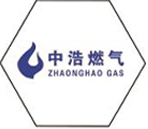
8 月 . 18, 2024 13:41
Back to list
Relief Valve Function and Importance in Pressure Control Systems
The Importance of Pressure Relief Valves in Industrial Applications
In the realm of industrial processes, safety and efficiency are paramount. One critical component that plays a vital role in maintaining both is the pressure relief valve (PRV). Commonly referred to in Arabic as صمام التنفيس, these devices are designed to prevent excessive pressure buildup within a system, safeguarding equipment and ensuring safe operations in various industries.
Understanding How Pressure Relief Valves Work
A pressure relief valve is a safety device that acts automatically to release pressure when it exceeds a predetermined limit. It is typically installed on pressure vessels, pipelines, and high-pressure systems where there is a risk of overpressure. The working principle is quite straightforward if the pressure within the system reaches a set point (the valve's set pressure), the valve opens, allowing fluid (liquid or gas) to escape, thereby reducing the internal pressure to a safe level.
Types of Pressure Relief Valves
There are several types of pressure relief valves, each suited for specific applications. The two most common types are
1. Spring-Loaded Pressure Relief Valves These are the most common type and use a spring mechanism to hold the valve closed until the system pressure exceeds the set point. Once this pressure is reached, the spring compresses, allowing the valve to open and release excess pressure.
2. Pilot-Operated Pressure Relief Valves These valves utilize a smaller pilot valve to control a larger main valve. They can handle larger flow rates and are typically used in high-pressure applications. When the system pressure exceeds the set point, the pilot valve opens, allowing pressure to actuate the main valve and relieve excess pressure efficiently.
صمام التنفيس

Applications in Industry
Pressure relief valves are essential in various industries, including oil and gas, chemical manufacturing, pharmaceuticals, and food processing. In these sectors, they are crucial for protecting equipment like boilers, compressors, and reactors from catastrophic failures due to overpressure. For instance, in oil and gas operations, PRVs are vital for maintaining the integrity of pipelines and preventing leaks or explosions caused by sudden pressure surges.
Moreover, in pharmaceutical manufacturing, where processes must adhere to stringent safety and cleanliness standards, PRVs ensure that equipment operates within safe pressure limits, minimizing the risk of contamination or accidents.
Regulatory Compliance and Best Practices
The use of pressure relief valves is often required by industry regulations and safety standards. Organizations like the American Society of Mechanical Engineers (ASME) and the Occupational Safety and Health Administration (OSHA) mandate the proper installation and maintenance of these devices to ensure workplace safety.
Best practices for utilizing pressure relief valves include regular inspections, testing, and maintenance. This ensures that the valves remain in good working condition and can function effectively when needed. Additionally, it's crucial to select the appropriate valve size and type for the specific application, considering factors such as pressure ranges, fluid types, and flow characteristics.
Conclusion
In conclusion, pressure relief valves (صمام التنفيس) are indispensable components in industrial applications. They play a critical role in maintaining safe operating conditions, protecting equipment, and preventing hazardous situations from arising due to overpressure. By understanding their function, types, and applications, industries can better appreciate the significance of these devices and ensure their proper implementation and maintenance. Investing in the right pressure relief valve and adhering to safety standards is not just a regulatory requirement; it is a crucial step towards fostering a culture of safety and reliability in industrial operations.
Latest news
-
Unlocking The Quality Gas Pressure ReducersNewsNov.01,2024
-
The Role of Gas Pressure Reducing StationsNewsNov.01,2024
-
The Importance and Functionality of Safety Relief ValvesNewsNov.01,2024
-
The Essential Role of Safety Valves in Natural Gas ApplicationsNewsNov.01,2024
-
The Essential Role of Gas Pressure RegulatorsNewsNov.01,2024
-
Enhance Your Premium Gas FiltersNewsNov.01,2024

